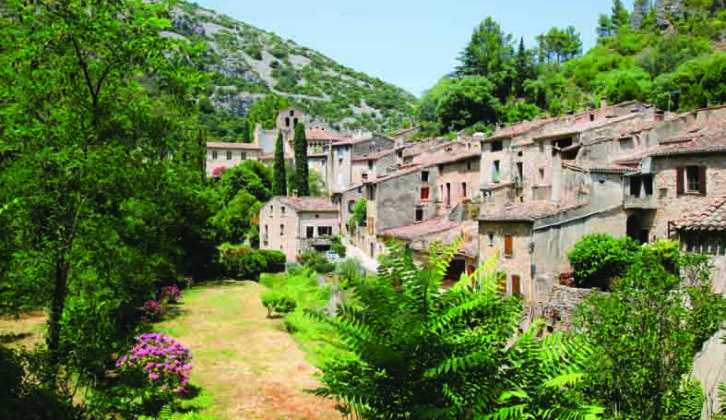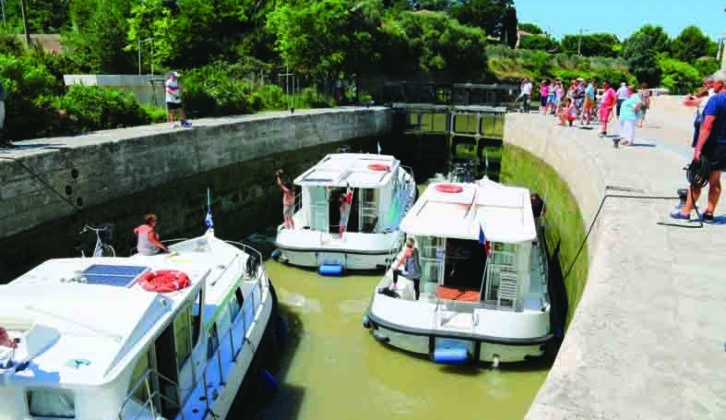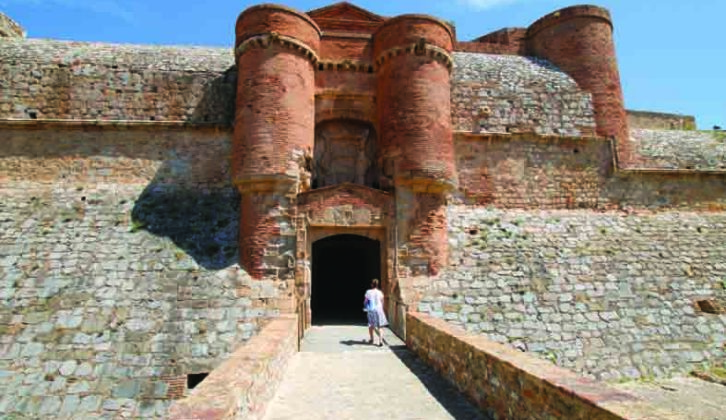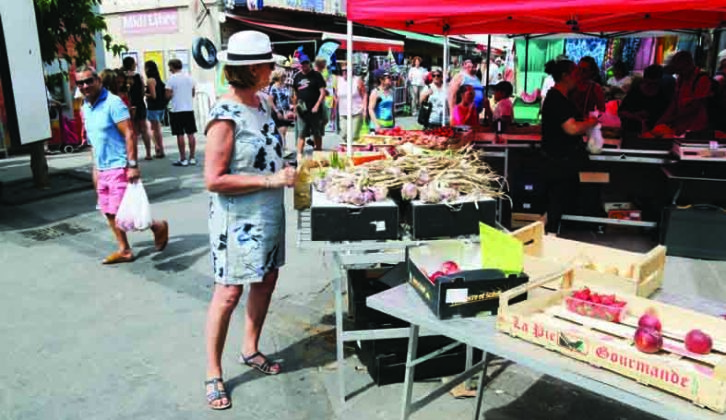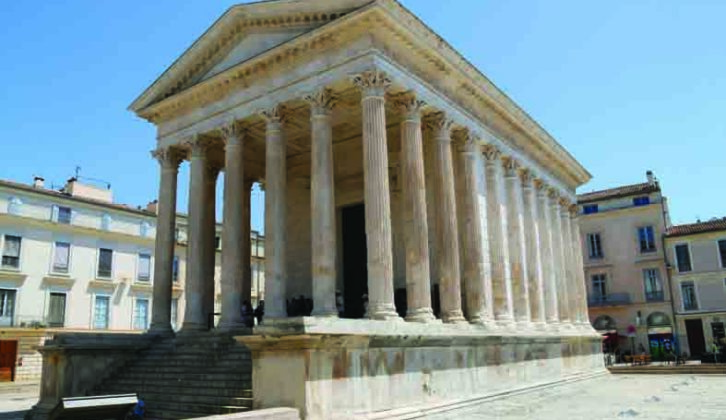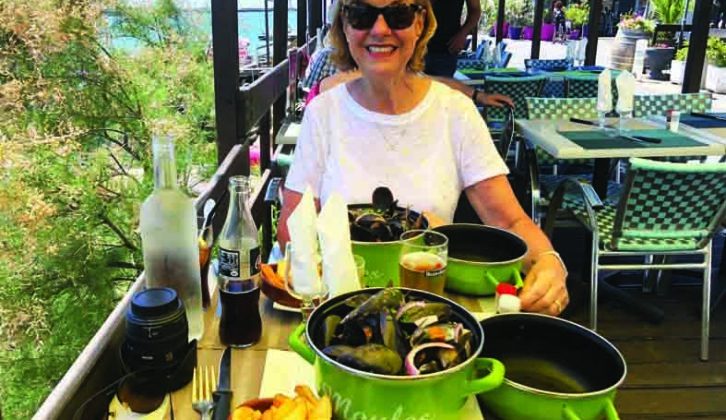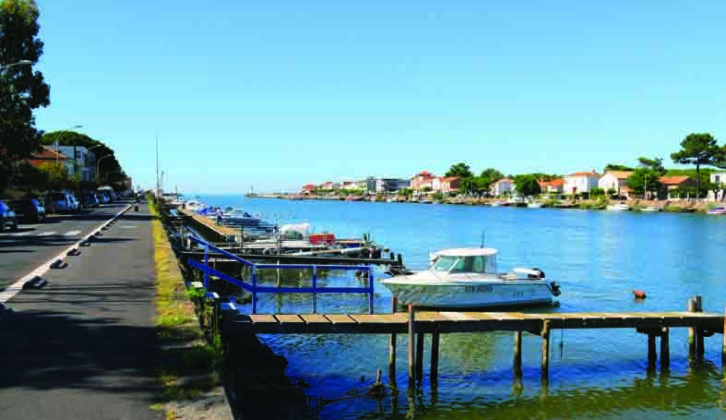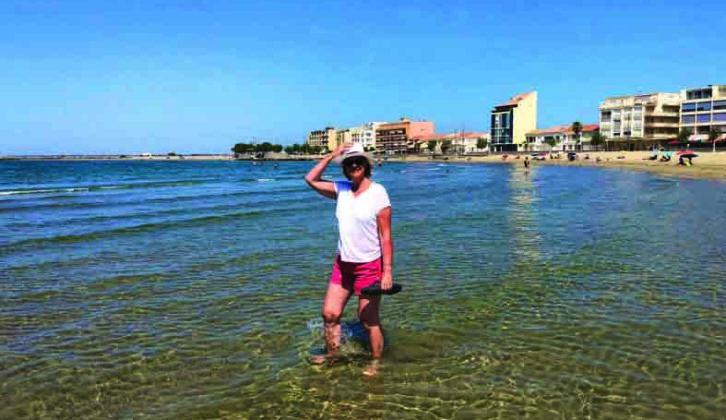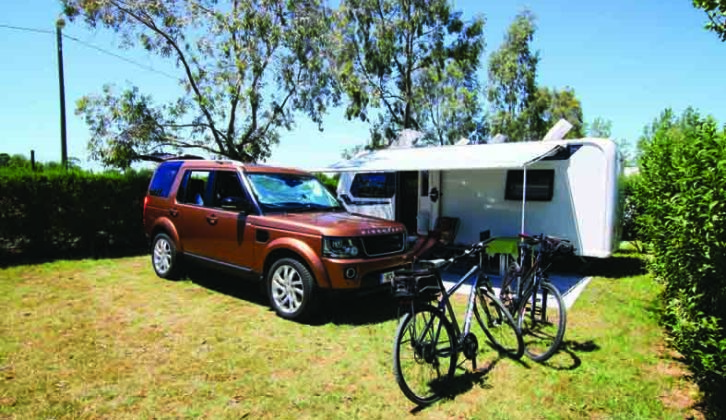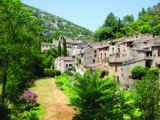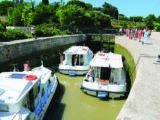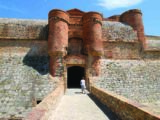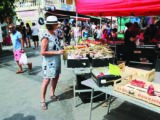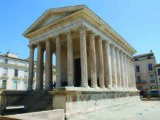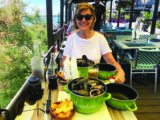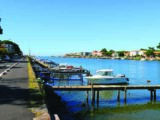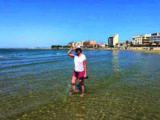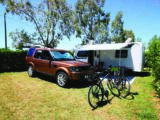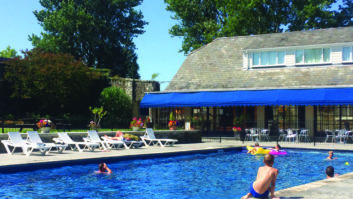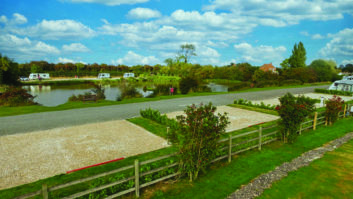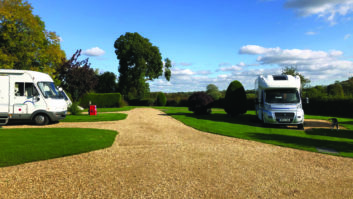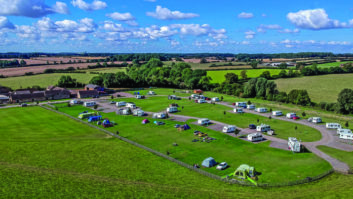For this trip we had a full four weeks away planned, so thought ourselves very fortunate indeed; and because our main stop in France was a site that we’d stayed at before, we knew what to expect.
Following three days of relaxed travelling (including an overnight ferry crossing from Hull to Zeebrugge), we arrived at Camping Le Neptune at Agde, where we received our usual warm welcome.
It’s easy to see why Neptune is so popular, with its individually separated pitches, clean facilities and lovely pool area.
After a day or two of settling in, which included trips to nearby Le Grau d’Agde – a short cycle ride along the path by the River Hérault, to a favourite seafront café and the daily market – it was time for us to venture a bit further afield.
We were keen to revisit the flight of locks at Fonséranes, on the Canal du Midi near Béziers – on our previous trip, the area had been closed for major building work.
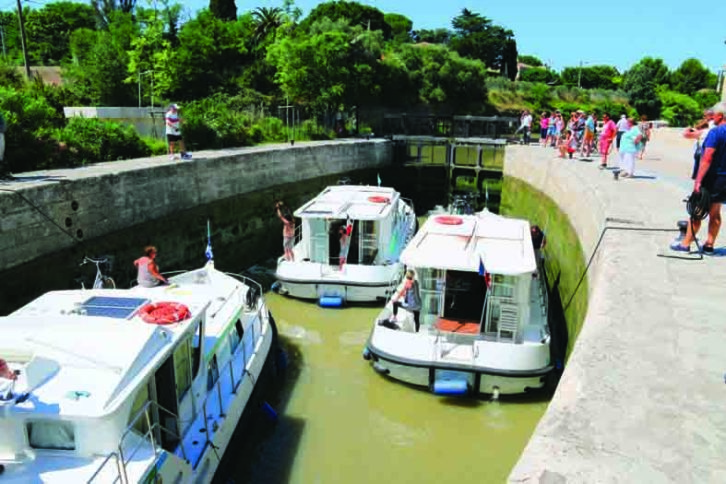
We had been a few years before that, too, and back then you had to be careful not to fall into the water – there was no protection at all! Now there are railings (apart from the top lock), and the site has been redeveloped, with a large car park and café/restaurant. Quite frankly, they’ve done a lovely job.
It was fascinating to follow the holiday boats, often three or four at a time, from the bottom of the flight of locks to the top. Those at the top waiting to go down had a long wait! When the sluices were opened, the power of the water was phenomenal. It’s hard to believe that the actual locks are more than 350 years old.
We enjoyed lunch in the restaurant before heading for Chateau-Abbaye de Cassan, near Roujan. Situated among vineyards and olive groves, this 12th-century monastic retreat became a powerful royal priory and in time, a luxurious dwelling, earning itself the title Little Versailles of Languedoc. Still a private dwelling, several rooms have been restored to their former glory. The acoustics in the church would give St Paul’s Cathedral a run for its money; they are amazing.
Opulent castles
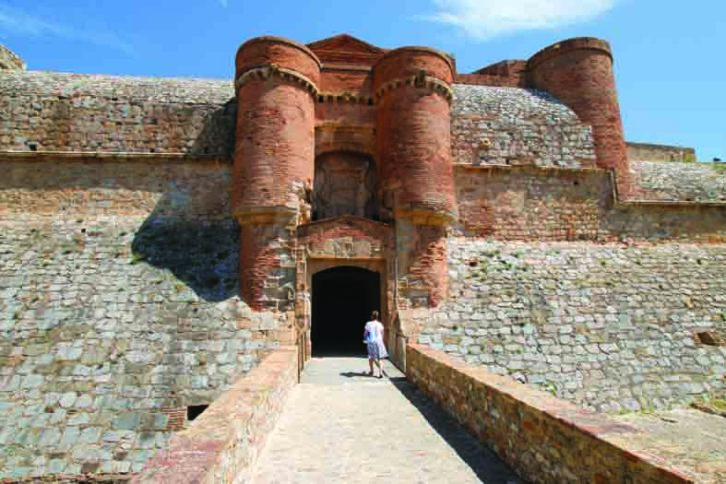
The Fortress of Salses (between Narbonne and Perpignan) looks like a giant sandcastle, and was once on the border between France and Spain. Built by Ferdinand of Aragon between 1497 and 1506, it’s a classic example of Spanish military architecture.
We took the guided tour before wandering at leisure around the many rooms and the subterranean stables. The fortress eventually ended up in the French royal family’s hands, and lovers of the TV series Versailles can see many reminders of Louis XIV’s occupation.
Letting the car have a rest, we spent the next few days cycling locally, including a trip to the round lock on the Canal du Midi near Agde, which allows three canals into the one lock. Like the locks at Béziers, it’s hard to believe it was built back in 1676, although it was enlarged in 1978.
We also had a market ‘fix’ at Agde and Le Grau d’Agde. As the weather was so glorious, I decided to go on a boat trip from Le Grau d’Agde along the coast to Cap d’Agde, via Fort de Brescon and into Agde marina. All I will say on the latter is, “Wow, how the other half live!” Kay had a stroll around the market and then relaxed at the caravan.
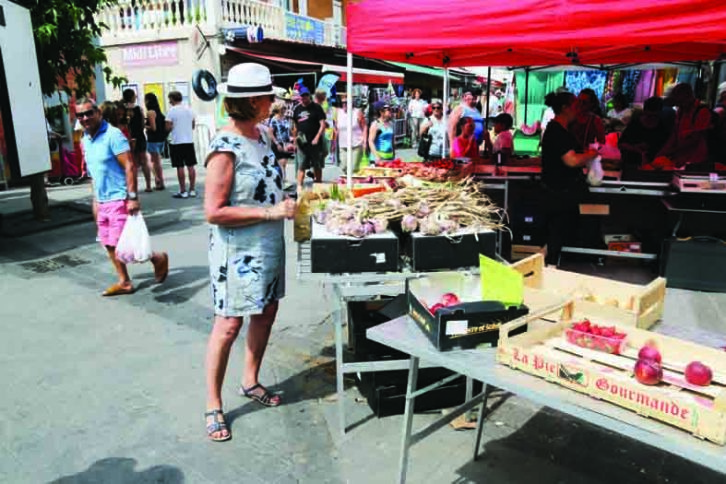
On previous visits to the area, we’d parked at Mont St Clair, in Sète, to admire the view of the old town and harbour. Sète is at the opposite end of the Étang de Thau to Agde and is an easy drive. The Étang de Thau is a huge sea lagoon where oysters flourish. It’s also where the Canal du Midi ends (or starts), at Marseillan.
After enjoying a picnic at Mont St Clair, we went into Sète proper. A major fishing and industrial port, in August it hosts the annual water jousting tournaments, which date back to 1666. We weren’t there for the event, but did see several of the boats. They have raised platforms at the back, were the jousters face off and try to knock each other into the water. Probably quite a spectacle!
Exploring underground
Driving inland from Camping Le Neptune, we weren’t prepared for the scale of the immense Grotte des Demoiselles in the Celette Mountains, aka the Subterranean Cathedral. You enter what appears to be a sheer cliff face, and a funicular train then takes you up quite a steep ascent for the first part of the visit.
Alighting from the train, you’re taken into the caves, some of which are vast. Words simply can’t describe how amazing they are. The visit covers a mile or so of the caves, a tiny proportion of the huge underground system, which was only discovered in the early 20th century. If you only visit one place int he area, make sure it’s here!
Remaining in the Celette Mountains, we made our way to the picturesque village of St-Guilhem-le-Désert. Once a remote hermitage, these days the village is a very popular destination and can get very busy in the height of summer. Thankfully there’s a large car park on the outskirts, and it’s a pleasant walk into the centre; it also wasn’t too crowded when we arrived.
It was lovely meandering around the higgledy-piggledy streets of this ancient place and into the main square, next to the Romanesque church, where there were several restaurants. The temperature was well into the 30s, but thanks to the buildings’ proximity to one another, not overbearing. However, Kay still took a fancy to a very pretty fan she found in one of the shops. Back at Camping Le Neptune, it was almost customary to use the pool facilities in the late afternoon. Over the past couple of years, a number of attractions for children have been added, next to the pool.
Watching a giant cup gradually fill with water before tipping over and spilling its contents became a mesmerising pastime. However, in the name of research, I bravely took my turn under the tipped cup. I’ve decided not to grow up, as those who have tell me it’s overrated!
Sites such as the ancient aqueduct of Pont du Gard and towns such as Carcassonne, Arles and Aigues-Mortes, are all within reach of Camping Le Neptune; but one place that we’d passed by on the autoroute and never visited was Nîmes, with its huge Roman amphitheatre, Les Arènes.
We did look at going there by train, but it would have been quite expensive, so instead, we used the superb Park and Ride system. Stopping at the easily accessible car park at Parking du Parnasse, we bought our tickets for a handful of euros and had only a short wait before the train arrived. Although I’d an idea where we needed to get off so that we’d be near Les Arènes, I needn’t have worried. You can’t miss it – it’s huge.
Before going into Les Arènes, it was coffee time and we enjoyed watching the world go by, sitting outside a pleasant café in the shade of the great building.
Suitably replete, we paid our dues and went into Les Arènes; Crikey, it’s a warren! Thankfully, the audioguide takes you around a pre-planned route. Initially you spend time in the many corridors and rooms under the stadium, but eventually you end up near the top of the seating area in the oval arena. Although built towards the end of the first century, Les Arènes is still an important venue, hosting many concerts and sporting events today. Indeed, when we were there, preparations were being made for one such show. It’s not difficult to imagine Russell Crowe and his gladiator ‘friends’ strutting their stuff all those years ago.
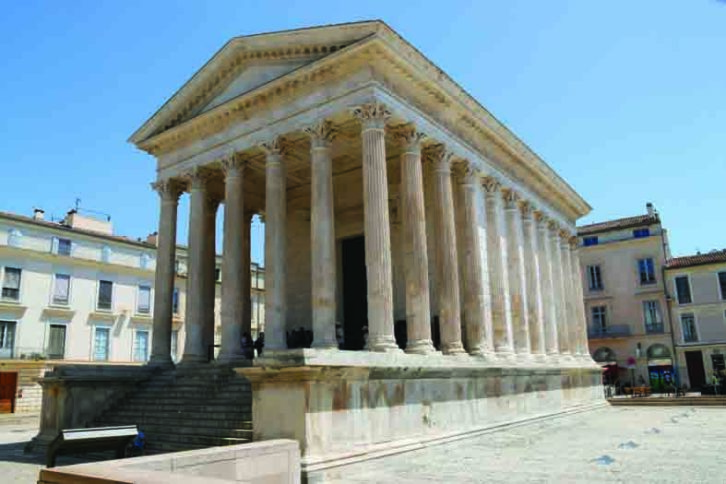
One of the best ways to get a feel for a place is to take a trip on the little tourist trains; they always take you around the most interesting parts of the town you’re visiting. Nîmes was no exception.
You pre-purchase tickets in the Tourist Office, which is next to Les Arènes, before hopping on the train at its nearby starting point. As it meandered around the streets, we saw many new places – the Jardin de la Fontaine (which dates back to Roman times) and Maison Carrée (a perfectly preserved Roman temple) to name but a couple.
Sadly, we didn’t have time to visit those (and many more) places, but we now have another good reason to return to Nîmes.
Relaxing at the campsite
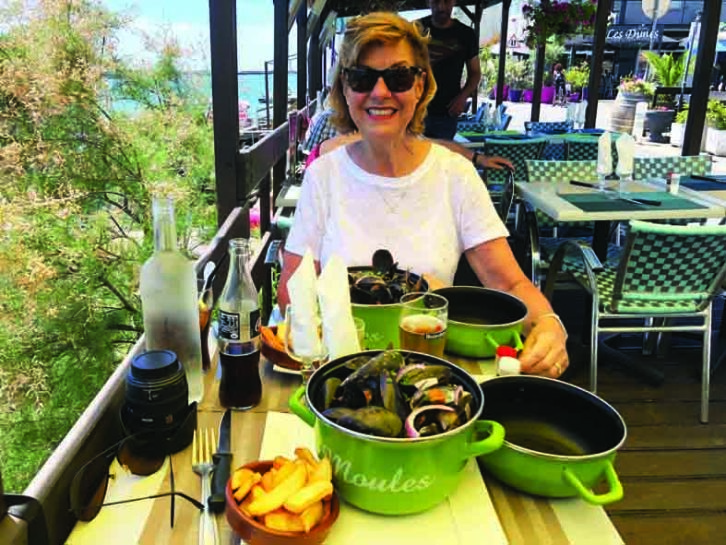
I make no apology for spending a lot of time at Camping Le Neptune. There’s just such a nice atmosphere, one that makes you want to stay and relax in the sunshine.
However, even on days when we didn’t go visiting other places, we enjoyed our bit of exercise, cycling to the seafront.
In the evening (despite having a barbecue most days), it was lovely to stroll past the waterside restaurants and onto the pier, to watch the sun set over the Mediterranean.
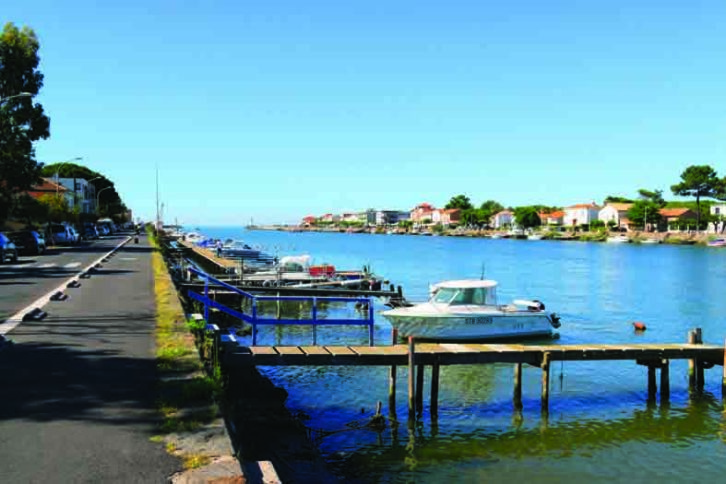
Our final visit was to Pézenas, a few miles inland. Again, it’s somewhere we’ve been before, but we couldn’t resist the ancient streets – and more to the point, enjoying a meal at one of the outdoor restaurants at Place Gambetta!
It doesn’t seem to matter how many times we visit Languedoc-Roussillon, there’s always somewhere new and spectacular to see.
A taste of Burgundy
Another part of France that we have a great fondness for is Burgundy, an area that we keep promising to return to.
As a taster, on our way back north, we decided to spend a couple of days in Chalon-sur-Saône, which is easily accessible from the A6 autoroute.
We stayed at Camping du Pont de Bourgogne, a mile or so on foot from the town, on the opposite bank of the River Saône. As the weather was so lovely, we lazed in the sunshine and watched the river flow by.
Next morning, we walked into the town, ending up at Place Saint Vincent, where we enjoyed a coffee in the shadow of the cathedral. Chalons-sur-Saône is quite large, but the old centre is compact and it’s easy to get around on foot.
As the day went on, the temperature rose, so the only thing to do was return to the van, sit under our canopy and enjoy a glass (or two!) of Burgundy’s finest.
Even with four weeks away, the days flew by. We stopped at other lively sites, including Camping La Forge de Sainte-Marie, in Champagne-Ardennes, another region we’ll be returning to. We just need more time!
TRIP PLANNER
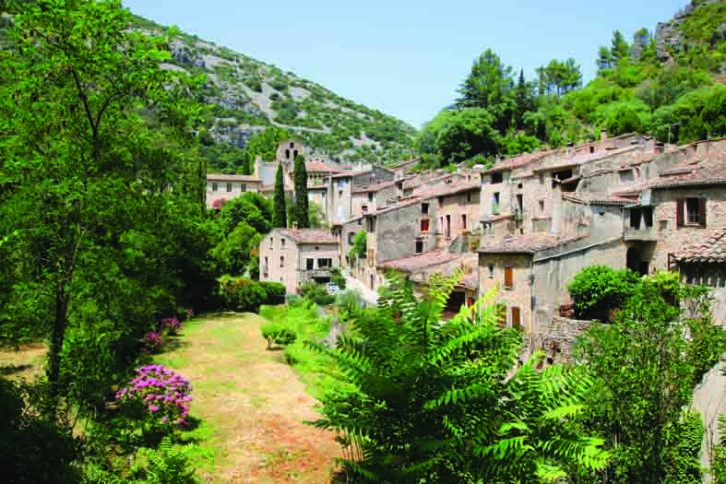
Way to go
A9 exit Agde, then exit Le Grau d’Agde. First exit over bridge Grau d’Agde. Fourth exit at first and second roundabouts, straight on at third and fourth roundabouts, second exit at fifth (Grau d’Agde). Campsite is on left.
Our outfit
Land Rover Discovery towing a 2019 Coachman VIP 545.
Find out more
- Fonseranes Locks
- Château-Abbaye, Cassan
- Fortress of Salses
- Grotte des Demoiselles
- Nîmes parking
- Les Arènes
- Nîmes Petit Train
Where we stayed
Camping Le Neptune
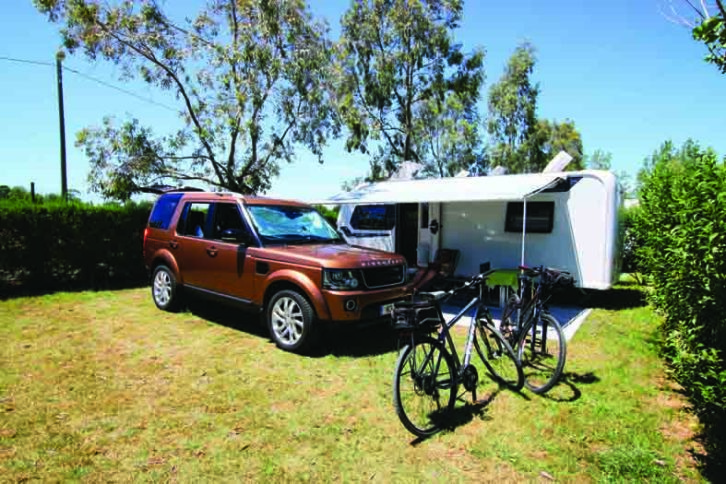
Le Neptune is a family-run campsite with 160 pitches, all flat and separated by hedges and trees (which offer some shade). The pitches vary in size and have 10A electricity supply. Charcoal barbecues are not allowed on pitches, only on the dedicated areas. Gas barbecues are allowed.
The facilities blocks are kept very clean.
There’s an outdoor heated swimming pool and a sports field. Also available on-site are free Wi-Fi, a launderette, a snack-bar and a bar (with TV). Bread and pastries can be ordered the day before, and other basic provisions are available, too.
- Address 46 Boulevard du Saint Christ, 34300 Agde
- Tel +33 (0)467 94 23 94
- www.campingleneptune.com
- Open from early April to early October
- Charges (Pitch+2+hook-up) €16 (low season, using the ACSI camping card)
If you liked this… READ THESE:
Getaway on a Spring tour of France
10 brilliant adults-only touring sites
Best caravans for 2022: our top picks
If you’ve enjoyed reading this article, why not get the latest news, reviews and features delivered direct to your door or inbox every month. Take advantage of our brilliant Practical Caravan magazine SUBSCRIBERS’ OFFER and SIGN UP TO OUR NEWSLETTER for regular weekly updates on all things caravan related.
It was fascinating to follow the holiday boats, often three or four at a time, from the bottom of the flight of locks to the top
